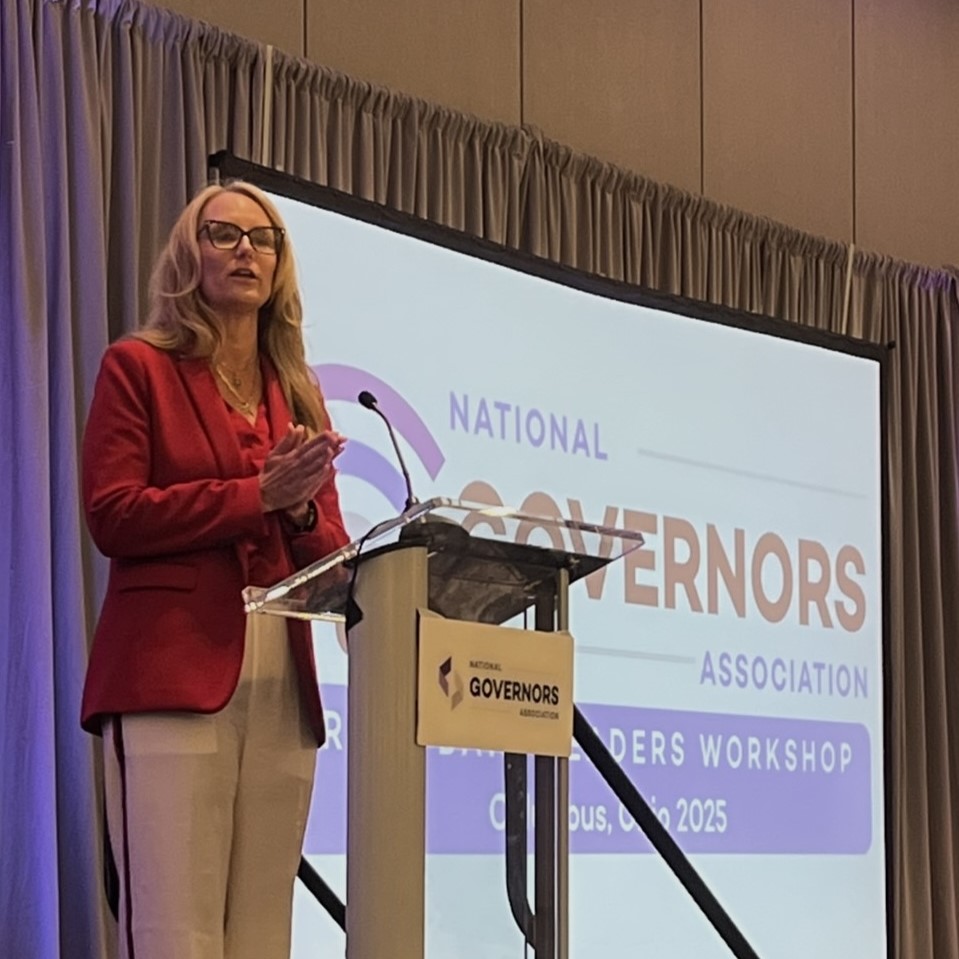On August 28th, NGA hosted the monthly meeting of the Human Services Advisors Institute, which featured presentations on supporting youth with high acuity needs. The discussion focused on how Governors and their teams drive policy solutions that strengthen outcomes for high-acuity youth mental health cases involving populations like system-involved youth, those with intellectual disabilities and co-occurring conditions, or those with placement complications. The call featured presentations from Ohio and Oregon on their respective approaches and recent initiatives.
A recording is available here. Please contact the NGA Children & Families team for the password.
Speakers
- Tia Cokes, Program Administrator, Ohio Department of Mental Health and Addiction Services
- Rachel Currans-Henry, Senior Policy Advisor, Office of Oregon Governor Tina Kotek
Key Takeaways for Governors’ Offices
- Most states report a lack of standardization for defining “high-acuity youth” (youth with mental health conditions that require complex coordinated care)
- State small group discussions reported common themes, such as system-involved youth at the intersection of juvenile justice and child welfare, youth sleeping in offices due to lack of appropriate placements, and those with complex behavioral health and substance use needs.
- The bully pulpit is an effective motivator to drive change: Clear and distinct executive commitment was critical to Ohio’s success and enabled bullish approaches cross-agency collaboration; in Oregon, challenges around competing stakeholder interests and public messaging around regulatory reform required Governor action to catalyze coalition building efforts
- Governor DeWine’s public support for MRSS expansion enabled state leaders to be bullish and ambitious in their approach to program rollout
- Governor Kotek’s willingness to testify before the Oregon legislature signaled the severity of the issue and provided momentum for state leaders to engage
- Though safety concerns and system functionality lie in delicate balance, states and territories can examine how legacy regulations impact service delivery to uncover opportunities for improved efficiency within their systems
- NGA’s next project on Youth Mental Health will entail a series of action lab workshops: Smaller, one to two-day in-person convenings will feature deep dives on strategic planning support for states and territories developing approaches to high-acuity youth
Presentation Summaries
Ohio’s Mobile Response and Stabilization Services (MRSS) Statewide Expansion
Following Governor DeWine’s commitment in his April 2024 State of the State Address, Ohio has expanded MRSS to all 88 counties as of September 1, 2025. The service provides 24/7 mobile crisis response for all youth under 20 experiencing behavioral health crises.
Program Key Components
- “Family defines the crisis” approach supports a “just-go” service model aimed at reducing administrative barriers to delivering services
- Crisis teams arrive within 60 minutes to homes, schools, or community locations
- Initial mobile response provides intensive care up to 72 hours, followed by up to 6 weeks of stabilization services
- New integration with 988; crisis hotline is the primary access point for families
- Entails a collaboration across the Medicaid agency, the Department Mental Health and Addiction Services, and the Department for Children and Youth
Implementation Strategy
- Shifted from county-by-county to 18-region model with 12 selected providers that act as a hub-and-spoke
- Implemented “firehouse rate” funding model combining state mental health and Medicaid funding that helps ensure staff availability and a stable funding model, even during periods of low- to no-utilization of services
Outcomes Data
MRSS services demonstrated significant reductions compared to 30 days prior to a youth’s engagement, including:
- 50% reduction in crisis stabilization admissions
- 45% reduction in arrests
- 44% reduction in detention admissions
- 38% reduction in emergency department admissions.
Oregon’s Regulatory Reform Initiative
Earlier this year, Governor Kotek pursued a comprehensive legislative reform to improve the continuum of care characterized by high rates of emergency department boarding, provider refusals to accept admissions, dramatically reduced residential capacity, and workforce burnout driven in part by stringent regulations. While the comprehensive reform bill did not pass during the 2025 legislative session, the Kotek Administration looks to continue efforts and reintroduce the package in future years.
Context
- A lack of placement options constrains OR Emergency Departments discharge options, resulting in extended stays for youth seeking care.
- Fewer than a third of referrals to psychiatric residential programs were accepted in January 2025
- Regulatory framework creating barriers to provider participation
Reform Approach
Insights from OR’s System of Care Advisory Council provided the backbone for a comprehensive omnibus bill addressing—
- Regulatory Alignment: Created unified abuse definitions across care settings and eliminated dual statutory frameworks causing confusion
- Provider Regulations: Streamlined transportation regulations and moved from immediate license revocation to progressive regulatory actions
- Treatment Access: Removed blanket prohibitions on out-of-state specialized treatment for children in foster care












